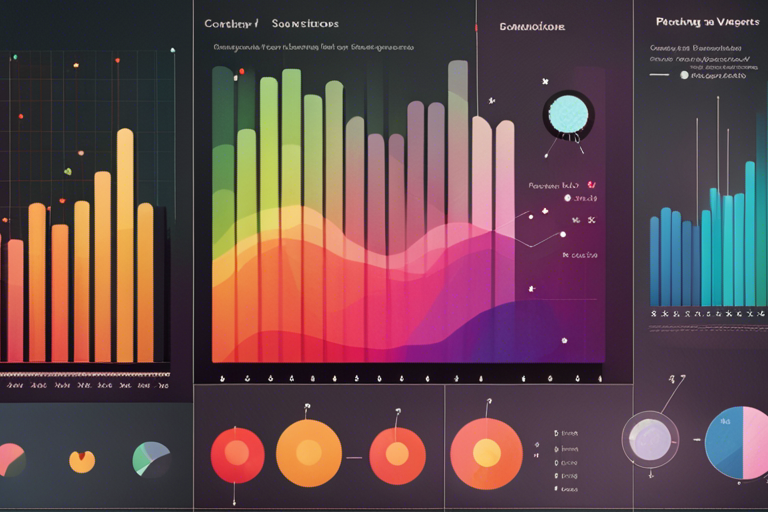Introduction:
Have you ever wondered why some people seem to effortlessly achieve success while others struggle to make progress? It all comes down to the power of visualization. By harnessing the incredible potential of your mind, you can turbocharge your success and bring your dreams to life. In this blog, we will explore a range of visualization techniques that will help you unlock your full potential and achieve the success you desire.
Here’s what we’ll delve into:
Understanding the science behind visualization techniques and how it impacts your brain
Exploring different visualization techniques and how to effectively implement them
Unleashing the power of affirmations and how they can transform your mindset
Using visualization to overcome obstacles, conquer fears, and reach your goals
Practical tips and strategies to enhance your visualization techniques practice
Real-life success stories of individuals who have transformed their lives through visualization
Whether you’re aiming for professional success, personal growth, or improved well-being, visualization can be a powerful tool in your journey. So, grab a cup of your favorite beverage, get comfortable, and let’s dive into the world of visualization techniques that will ignite your potential and propel you towards the success you deserve.
Short Summmery
- The power of visualization techniques can significantly impact your ability to achieve success and bring your dreams to life.
- This blog explores a range of visualization techniques and how to effectively implement them.
- Affirmations play a crucial role in transforming your mindset and enhancing the visualization techniques process.
- Visualization techniques can help you overcome obstacles, conquer fears, and reach your goals effectively.
1. The Power of Visualization techniques
Visualization techniques is a powerful technique that can turbocharge your success in various areas of life. By creating mental images and using visual representations, you can tap into the potential of your subconscious mind and align your thoughts, emotions, and actions towards achieving your goals.
1.1 Harnessing the Subconscious Mind
One of the best ways to utilize visualization techniques is by harnessing the power of your subconscious mind. When you visualize your desired outcomes with clarity and detail, you send positive messages to your subconscious, which then works tirelessly to manifest those outcomes in your life. By consistently engaging in positive thinking and visualizing your goals, you can reprogram your subconscious mind to attract success and opportunities.
1.2 Vision Boards and Creative Visualization techniques
A popular visualization technique is the use of vision boards. These boards are physical or digital collages that display images, quotes, and affirmations representing your desired outcomes. Vision boards serve as a visual reminder of your goals and aspirations, helping you stay focused and motivated. By regularly visualizing your vision board and connecting with the emotions associated with your goals, you align yourself with the positive energy necessary to bring them to fruition.
1.3 Index Cards and Mental Images
Another effective visualization technique is using index cards or small notes to create mental images. Write down your goals, aspirations, or affirmations on individual cards and carry them with you throughout the day. Whenever you come across them, take a moment to vividly imagine your desired outcome. This practice allows you to integrate the power of visualization techniques into your daily life, keeping your goals at the forefront of your mind as you go about your routines.
1.4 Data Visualization techniques in the Real World
Visualization techniques are not limited to personal development but can also be applied in the world of data. As our lives become increasingly data-driven, the ability to communicate complex information visually is a valuable skill. Data visualization tools, such as bar charts, pie charts, and other visual elements, help us understand and present data in a more accessible way. By harnessing the power of visual representation, we can effectively convey meaningful insights and make informed decisions based on data.
1.5 The Most Powerful Visualization Technique: You
While there are various kinds of visualization techniques, the most powerful one lies within you. It is your ability to create a vivid mental image and truly believe in its realization. By leveraging your own creativity, imagination, and understanding of data, you can bring your goals and desires to life through visualization techniques
2. Creating a Vision Board
A vision board is a popular and effective visualization technique that can help turbocharge your success. By creating a visual representation of your goals and aspirations, you can tap into the power of positive thinking and harness the capabilities of your subconscious mind. Let’s explore how to create a vision board and unleash its potential for manifesting your dreams.
1. Gather your materials:
A corkboard, poster board, or any other large surface to serve as the base of your vision board.
Magazines, newspapers, or printouts with images and words that resonate with your goals and desires.
Scissors, glue, tape, or any other adhesive you prefer.
2. Set your intentions:
Take a moment to reflect on what you want to achieve in various areas of your life, such as career, relationships, health, and personal growth. Be specific and write down your goals in a positive and present tense. For example, instead of saying, “I want to lose weight,” you can say, “I am at my ideal weight and feel healthy and vibrant.”
3. Find visual inspiration:
Flip through magazines or search online for images, quotes, and phrases that align with your goals. Look for visuals that evoke the emotions and experiences you want to attract. It could be pictures of your dream house, quotes that inspire you, or images that represent your ideal state of being.
4. Create a collage:
Cut out the images, words, and phrases that resonate with you and arrange them on your vision board. Be creative and let your intuition guide you. You can organize them by categories or create a collage that represents the overall vision of your life. Once you’re satisfied with the arrangement, glue or tape everything in place.
5. Display and engage with your vision board:
Find a prominent place where you can regularly see your vision board, such as your office, bedroom, or any other area you frequent. Make it a habit to spend a few minutes each day looking at your vision board and visualizing yourself living your desired reality. Engage all your senses and immerse yourself in the visualized experience.
6. Take inspired action:
While visualization is powerful, it’s essential to pair it with action. Use your vision board as a guide to identify the necessary steps you need to take to achieve your goals. Break them down into bite-sized tasks and commit to taking consistent action towards their realization.
7. Update and evolve:
Keep revis
3. Harnessing the Power of Data Visualization techniques
Data visualization techniques is a powerful tool that can turbocharge your success by allowing you to understand and interpret complex information in a more accessible way. By visually representing data, you can uncover patterns, trends, and insights that may not be as apparent through traditional textual or numerical analysis. In this section, we will explore various kinds of visualization techniques and their role in helping you make data-driven decisions.
1. Bar Charts: One of the most common data visualization techniques is the bar chart. By using vertical or horizontal bars to represent different categories or variables, you can easily compare values and identify trends. For example, if you are analyzing sales data over time, a bar chart can help you visualize which products or months are performing the best.
2. Pie Charts: Another widely used visualization technique is the pie chart. It allows you to represent proportions and percentages in a visually appealing way. If you want to showcase the distribution of different categories within a whole, such as the market share of different competitors, a pie chart can effectively convey the information at a glance.
3. Line Graphs: Line graphs are ideal for tracking trends over time. By connecting data points with lines, you can observe the progression and fluctuations of a specific variable. For instance, if you want to analyze website traffic over a period of months or years, a line graph will provide a clear visual representation of the data.
4. Prop-based Visualizations: Sometimes, data can be more effectively understood when it is represented using physical objects or props. This could involve using items such as index cards, sticky notes, or even physical models. For example, when planning a project with multiple tasks and dependencies, using index cards to represent each task and arranging them on a board can help you visualize the project flow and identify potential bottlenecks.
5. Interactive Data Visualization Tools: In today’s data-driven world, there are numerous data visualization tools available that offer interactive and dynamic visualizations. These tools allow you to explore data from different angles, drill down into specific details, and uncover hidden insights. By leveraging these tools, you can enhance your understanding of data and make more informed decisions.
💡 key Takeaway: Data visualization is a powerful technique that enables you to understand complex information by visually representing it. Techniques such as bar charts, pie charts, line graphs, prop-based visualizations, and interactive tools can help you uncover insights and make data-driven decisions.
4. Exploring Different Types of Data Visualization Techniques
Data visualization is a powerful tool that allows individuals to present complex information in a visually engaging and accessible way. By representing data through visual elements such as charts, graphs, and diagrams, it becomes easier to understand patterns, trends, and correlations. In this section, we will explore some of the most common data visualization techniques that can turbocharge your success in the data-driven world.
Bar charts are one of the most widely used and versatile visualization techniques. They represent data through rectangular bars of varying lengths, where each bar corresponds to a specific category or variable. Bar charts are excellent for comparing different data sets or showing changes over time. For example, you can create a bar chart to visualize sales performance by month or compare the revenue generated by different product categories.
2. Pie Charts:
Pie charts are another popular visualization technique that represents proportions or percentages in a circular form. The whole pie represents 100%, and each slice represents a specific category or data point. Pie charts are useful for showing the compositional relationship between different variables. For instance, you can create a pie chart to visualize the distribution of marketing budget across various channels or the market share of different competitors.
3. Line Charts:
Line charts are effective for displaying trends and changes over time. They utilize a series of data points connected by lines, which allows you to observe the progression or fluctuation of a variable over a specific period. Line charts are commonly used to track stock prices, weather patterns, or website traffic over time. They provide a clear visual representation of how variables evolve and help identify patterns or anomalies.
4. Scatter Plots:
Scatter plots are particularly useful for showing the relationship between two variables. They consist of data points plotted on a two-dimensional graph, with the horizontal axis representing one variable and the vertical axis representing another. Scatter plots are helpful in identifying patterns, correlations, or outliers in datasets. For example, you can create a scatter plot to visualize the relationship between advertising expenditure and sales revenue.
5. Heatmaps:
Heatmaps are effective for visualizing data in a grid format. They use color gradients to represent the magnitude or intensity of a specific value. Heatmaps are often used to display geographic or spatial data, customer behavior patterns, or website user interactions. By assigning different colors to varying intensities, heatmaps provide a quick and intuitive understanding of data distribution and concentration.
💡 key Takeaway: These are just a few
5. The First Step to Positive Change: Visualization Exercises
When it comes to achieving success and realizing our goals, visualization exercises are a powerful tool that can turbocharge our efforts. By harnessing the power of our subconscious mind and tapping into our creative visualization skills, we can create a visual representation of our desired outcomes. This not only helps us stay focused on our goals, but also allows us to tap into the power of positive thinking and attract positive energy into our lives.
To begin with, one of the most accessible and effective visualization techniques is creating a vision board. This involves gathering images, quotes, and affirmations that represent our aspirations and arranging them on a physical or digital board. By regularly looking at our vision board, we can reinforce our mental image of success and stay motivated to take action towards our goals.
Another technique that can be easily incorporated into our daily life is the use of index cards. By jotting down our goals, intentions, or affirmations on index cards and placing them strategically in visible locations, such as our desks or mirrors, we create visual cues that remind us of what we’re working towards. This constant visual reminder can help us stay present in the moment and maintain focus on our objectives.
For those working in a data-driven world, data visualization techniques can provide a tangible and effective way to make sense of complex information. Whether it’s using bar charts, pie charts, or other visual elements, data visualization allows us to translate data into easily understandable visuals. This not only enhances our understanding of the data but also enables us to communicate our findings to others in a clear and compelling manner.
In addition to these common visualization techniques, there are various kinds of visualization exercises that can cater to different needs and preferences. For example, some individuals find it helpful to use props, such as physical objects or symbols, to represent their goals or desired outcomes. Others may prefer guided visualization exercises, where they’re taken through a series of mental imagery to stimulate their visualized experience.
Regardless of the specific visualization technique used, the key is to develop a deep understanding of the datum we are visualizing. This means having a clear understanding of our goals, aspirations, or the data we are working with. By having a solid understanding of the specifics, we can create a visual representation that truly resonates with us and connects us to our objectives.
💡 key Takeaway: Visualization exercises are a powerful first step towards positive change. By creating a visual representation of our goals, harnessing the power of positive
Conclusion
In conclusion, visualization techniques have the potential to truly turbocharge your success. By harnessing the power of your imagination and creating vivid mental images of your desired goals and outcomes, you can propel yourself towards achieving them. Scientific research has shown that visualization can activate the same neural pathways in the brain as actually performing the desired actions.
This means that by regularly visualizing yourself taking successful steps towards your goals, you are not only preparing yourself mentally but also reinforcing positive behaviors and increasing your chances of success. To make the most of visualization, it is important to practice regularly and with focus. Set aside dedicated time each day to visualize your goals and immerse yourself in the experience. Use all your senses to make the visualization as realistic as possible, and
FAQ
What is visualization?
Visualization is a powerful technique that involves using your imagination to create a clear and vivid mental image of a desired outcome or goal. By visualizing, you can train your brain to focus on what you want and manifest it into reality.
How does visualization work?
Visualization works by using the power of the mind to imagine and create a desired outcome. By visualizing a goal or success, the brain is stimulated and motivated to work towards achieving it. It can also help to build confidence and belief in oneself, leading to increased likelihood of success.
How can visualization help with success?
Visualization is a powerful technique that allows you to mentally rehearse achieving your goals and creating success. By visualizing yourself already having achieved your desired outcome, you can train your mind to believe it is possible and increase your motivation and determination to make it a reality. This can lead to improved performance and a higher chance of success.
Are there any scientific studies on the effectiveness of visualization?
Yes, there have been several scientific studies conducted on the effectiveness of visualization techniques. One study found that athletes who used visualization techniques had improved performance compared to those who did not. Another study found that people who visualized themselves achieving their goals were more likely to actually achieve them. Additionally, research has shown that visualization can have a positive impact on physical and mental health, as well as overall well-being.
Can visualization be used for personal and professional goals?
Yes, visualization can be a powerful tool for achieving both personal and professional goals. By visualizing yourself successfully completing a task or achieving a goal, you can improve your motivation, focus, and confidence, which can ultimately lead to greater success. Additionally, visualizing your goals can help you create a clear plan of action and stay committed to reaching them.






